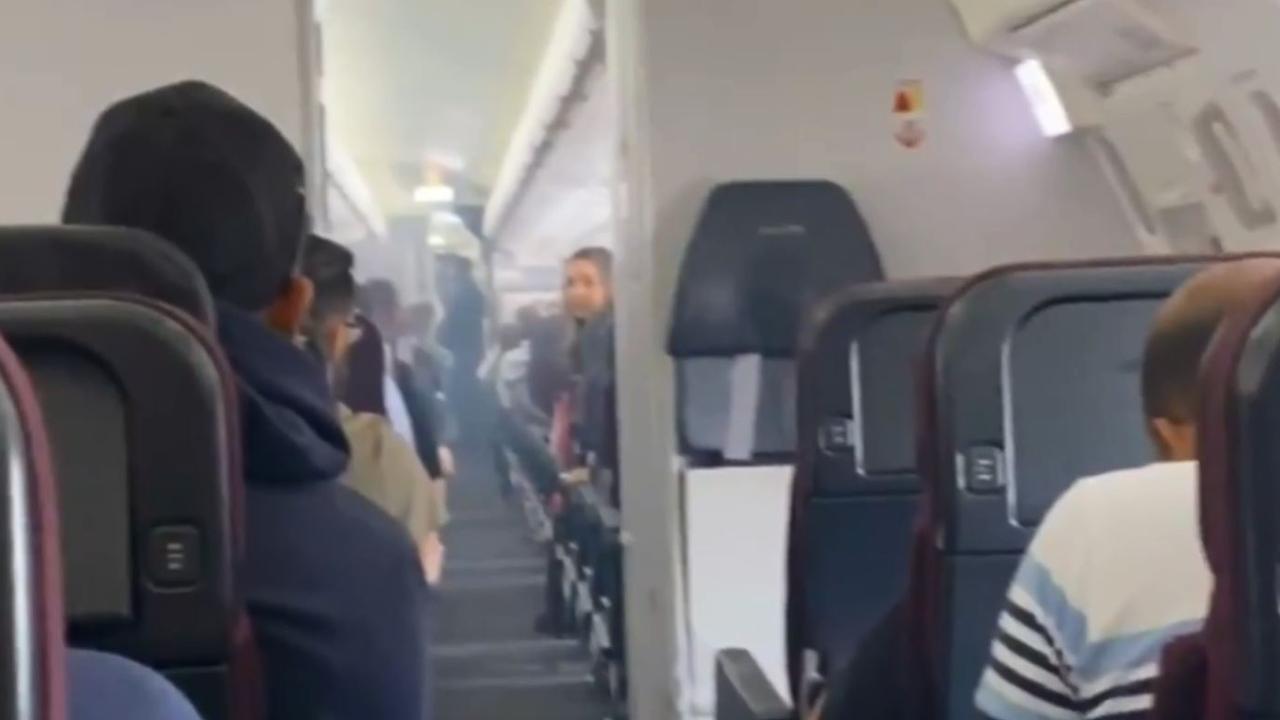Qantas passenger safety video found lacking after evacuation incident
The airline has updated its safety video after an incident at Sydney Airport where passengers took luggage on an emergency slide following a ‘limited and inconsistent’ video about what to do.
Business
Don't miss out on the headlines from Business. Followed categories will be added to My News.
Qantas has been scolded by the safety watchdog over an incident at Sydney Airport in which passengers were injured while evacuating an aircraft using the emergency slides.
The Australian Transport Safety Bureau’s final report on the incident on December 15, 2019, found instructions given to passengers as the cabin of the A330 filled with smoke did not include the phrases “leave everything behind” and “jump and slide”.
As a result a number of people retrieved their carry on before evacuating, slowing down the process, and six people were injured, one seriously.
The report said the Perth-bound flight with 232 people on board, returned to Sydney shortly after takeoff due to a hydraulic leak.
As the plane was towed to the gate, a haze began to fill the cabin and flight deck irritating the eyes and throat of passengers and crew.

In response the captain ordered an evacuation which saw 129 passengers disembark via aerobridges, and 93 using one of three escape slides.
The entire evacuation took just under two minutes from when the doors were open until the last passenger exited, but the ATSB found a number of passengers used the slides incorrectly.
To that end, one passenger ruptured tendons in both knees, while others suffered knee sprains, friction burns, elbow cuts and abrasions.
“The ATSB found limitations and inconsistencies in how Qantas’s safety video and briefing card described emergency slide use and what to do with cabin baggage in an emergency,” said ATSB chief commissioner Angus Mitchell.
“For example, the pre-flight video showed a passenger sitting down and placing their bag next to them, just prior to sliding.
“The management of passengers in an emergency situation is the last line of defence to avoid injuries and fatalities, so it is important passengers are well informed through the provision of sufficient and accurate communication about what they may be required to do.”
Since the incident, Qantas had updated its passenger safety briefing video and was looking to incorporate the phrase “leave everything behind” into its primary evacuation commands.
Qantas fleet safety captain Debbie Slade said additional training had also been provided for pilots and cabin crew when responding to such situations.
“The captain made the right decision to evacuate the aircraft and our crew worked hard to get passengers off the aircraft as quickly and as safely as possible,” said Captain Slade.
“We know this would have been a very unsettling experience for our customers and we thank them for responding when they were asked to evacuate.”
She said the latest Qantas safety video, released in February 2020, reinforced the point about leaving cabin baggage behind in an emergency evacuation.
“This incident is an important reminder for all air travellers to make sure they’re watching safety videos and demonstrations and reading the safety cards, even if they fly with us regularly,” Captain Slade said.
“Evacuations are extremely rare but it’s important customers know what to do if they are instructed to evacuate the aircraft.”
The ATSB report found the cause of the hydraulic leak was a ruptured hose, due to a combination of corrosion and fatigue cracking in the steel braid.
Hydraulic fluid was ingested into the auxiliary power unit air intake, which then contaminated the aircraft cabin through the airconditioning system.
In response to the incident Qantas replaced the hoses in its four oldest A330s as a precautionary measure.
More Coverage
Originally published as Qantas passenger safety video found lacking after evacuation incident









